So, stick around if you want to build a knowledge base that improves customer experience and streamlines support. I’ve compiled 20 of my favorite knowledge base examples so you can learn from the best.
Help Desk Knowledge Base Examples
1. HubSpot
Since you’re on the HubSpot website (welcome!), you probably know a little about what we do. If you arrived here from a Google search, here’s the quick rundown: HubSpot is a customer relationship management (CRM) platform that provides a suite of tools to help businesses grow by putting customers first. Whatever tool or hub (e.g., marketing, sales, or operations) you’re interested in, the HubSpot Knowledge Base is the best place to learn about it.
It’s packed with step-by-step guides, documentation, and troubleshooting articles to ensure your success with the platform.
What I like: HubSpot Knowledge Base makes finding the information I need easy. I love exploring the handy search bar, the quick list of all product/service categories, and even the glossary. I especially like that each article features detailed screenshots and instructions, so I never get lost.
I also like how the AI HubBot assists in summarizing answers and linking to more detailed documentation to solve customer queries.
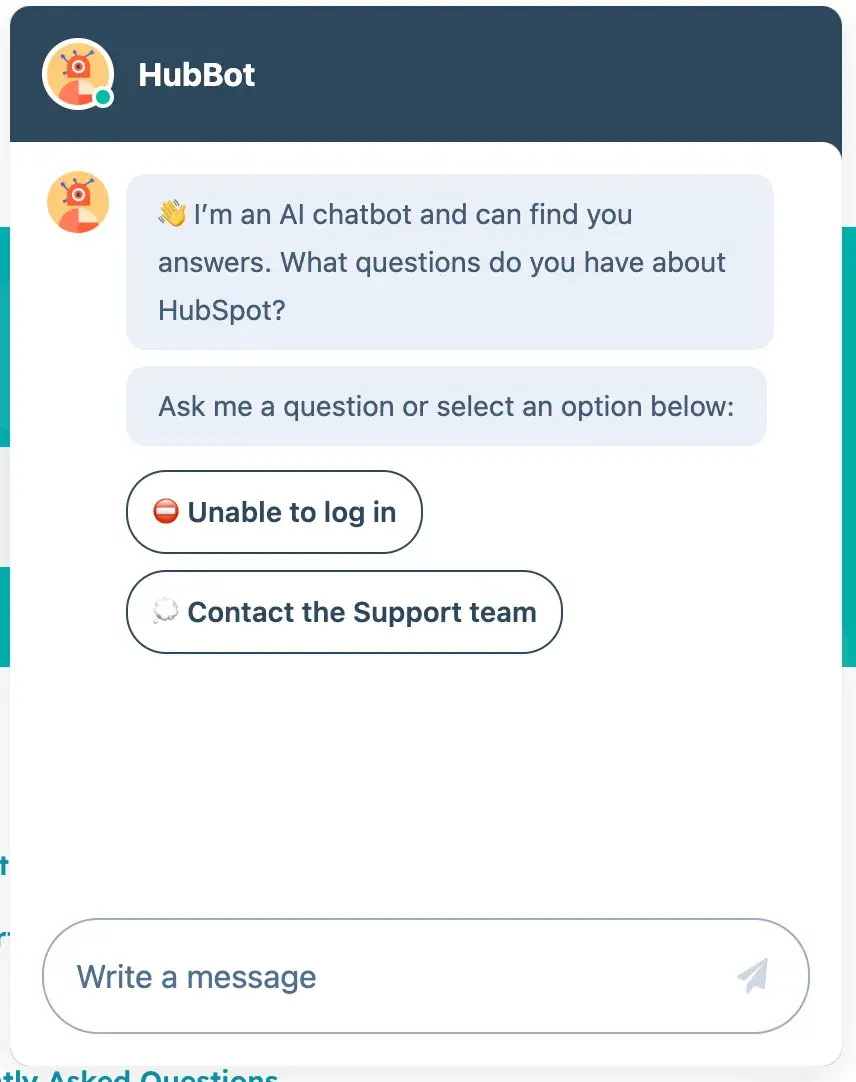
Pro tip: HubSpot’s knowledge base software can help you quickly create a searchable knowledge base that empowers your customers to find the answers they need.
2. Slack
Slack is a workplace messaging app used by 77 Fortune 100 companies, but it’s not just for big corporations. My band, Juice, uses Slack daily to communicate, share ideas, and plan everything from rehearsals to tours. If I ever run into an issue with Slack, there’s only one place I’m going: the Slack knowledge base.
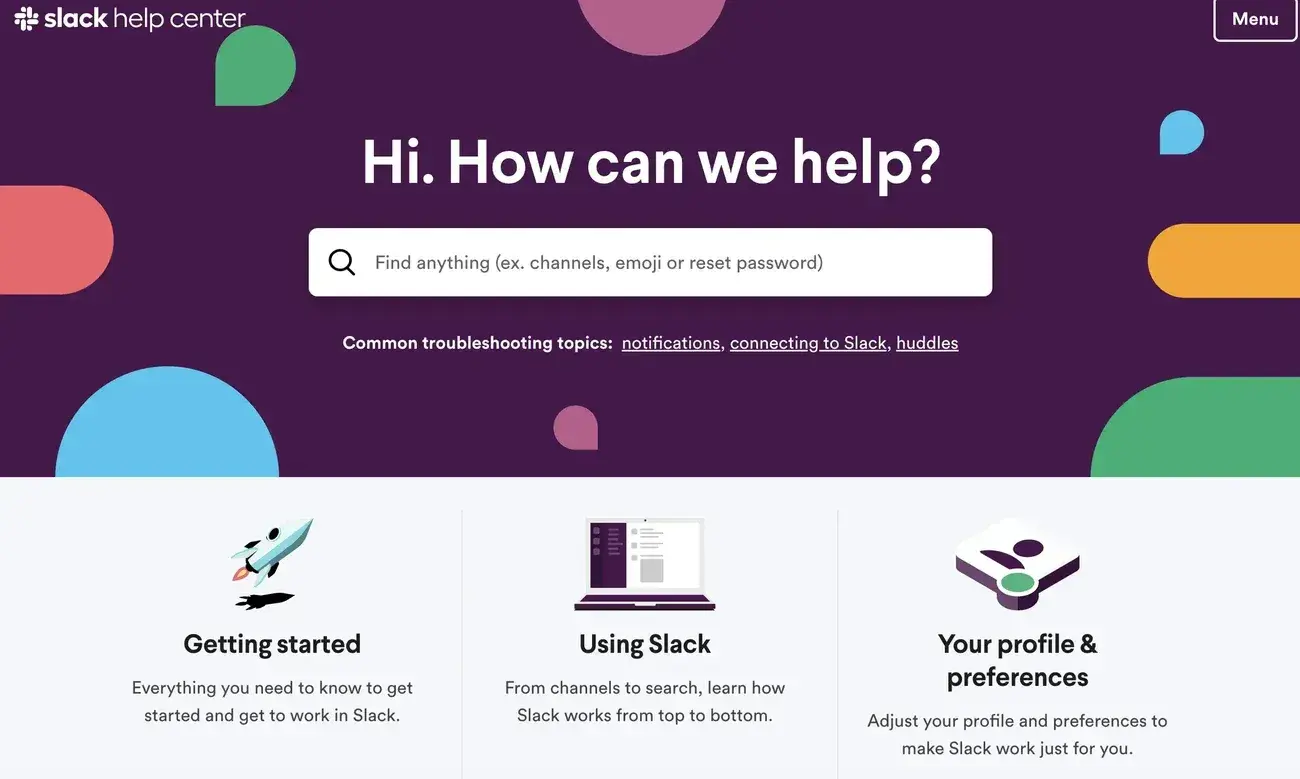
Slack’s knowledge base features a prominent search bar and direct links to common troubleshooting topics. It also offers shortcuts that help users save time. For example, I just discovered that pressing the “Up” key allows me to edit my previous message.
What I like: I find Slack intuitive, so I rarely use the knowledge base. When I do, I appreciate the powerful search function and high-quality video guides.
3. Confluence
As a collaboration and knowledge-sharing tool for companies, you’d imagine that Confluence’s knowledge base would be a masterclass in knowledge organization. Spoiler alert: It is.

If you’re considering using Confluence to create your knowledge base, you must visit this Resource Center. You’ll see great examples and learn the steps and best practices for building a knowledge base.
Beyond the clear and helpful main page, you’ll find detailed documentation, step-by-step guides, and plenty of high-quality GIFs and images to make the technical details more digestible. I enjoy the wealth of video examples that Confluence has for topics like team collaboration and getting started, as well as demos for all the products’ different use cases.
What I like: Confluence’s knowledge base is an excellent example of how marketing efforts can fit into an information site. It adds customer success stories alongside easy-to-access demo videos and product guides to reel you in.
4. Apple
When something goes wrong with my iPhone, my first stop is Apple’s knowledge base. It features extensive step-by-step troubleshooting guides, detailed FAQs, and YouTube video tutorials with subtitles for enhanced accessibility. If I can’t find what I’m looking for, the knowledge base conveniently directs me to human support.
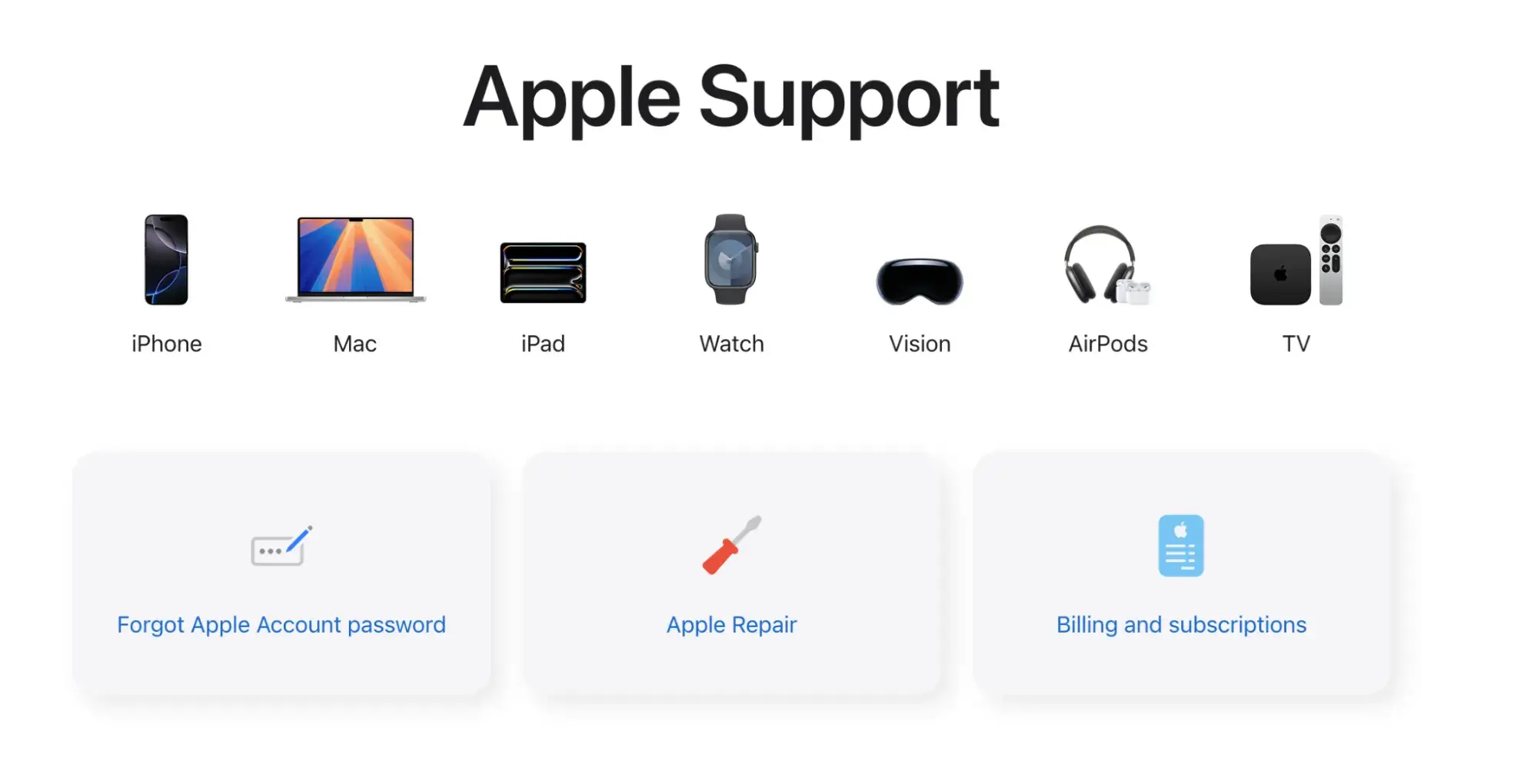
What I like: Apple offers a dedicated support app, which is super convenient for me as an iPhone user and mobile app enthusiast. The app provides helpful videos related to all Apple products and automatically links all your Apple devices so you can quickly file support claims.
5. Amplitude
Amplitude aims to make digital analytics accessible to every business, and its knowledge base plays a prominent role in making that a reality.

Amplitude’s help desk knowledge base has a user-friendly layout that’s easy to navigate, providing a great customer experience. If you’re new to this platform, the “Start Here” section is the ultimate guide to get you up and running. They also offer a helpful “Popular Content” section on their homepage that intelligently displays the most viewed articles.
What I like: The search bar on Amplitude’s knowledge base is more than just your average search bar. It’s AI-powered and remarkably fast. I like that it displays search results in a scrollable pop-up window instead of bringing you to a new page to display the results.

6. Whale
Whale is an AI-powered knowledge base and training tool designed for scaling companies. Its AI assistant helps you create your knowledge base in seconds, and its complete suite of process documentation tools enables you to easily develop high-quality documentation.
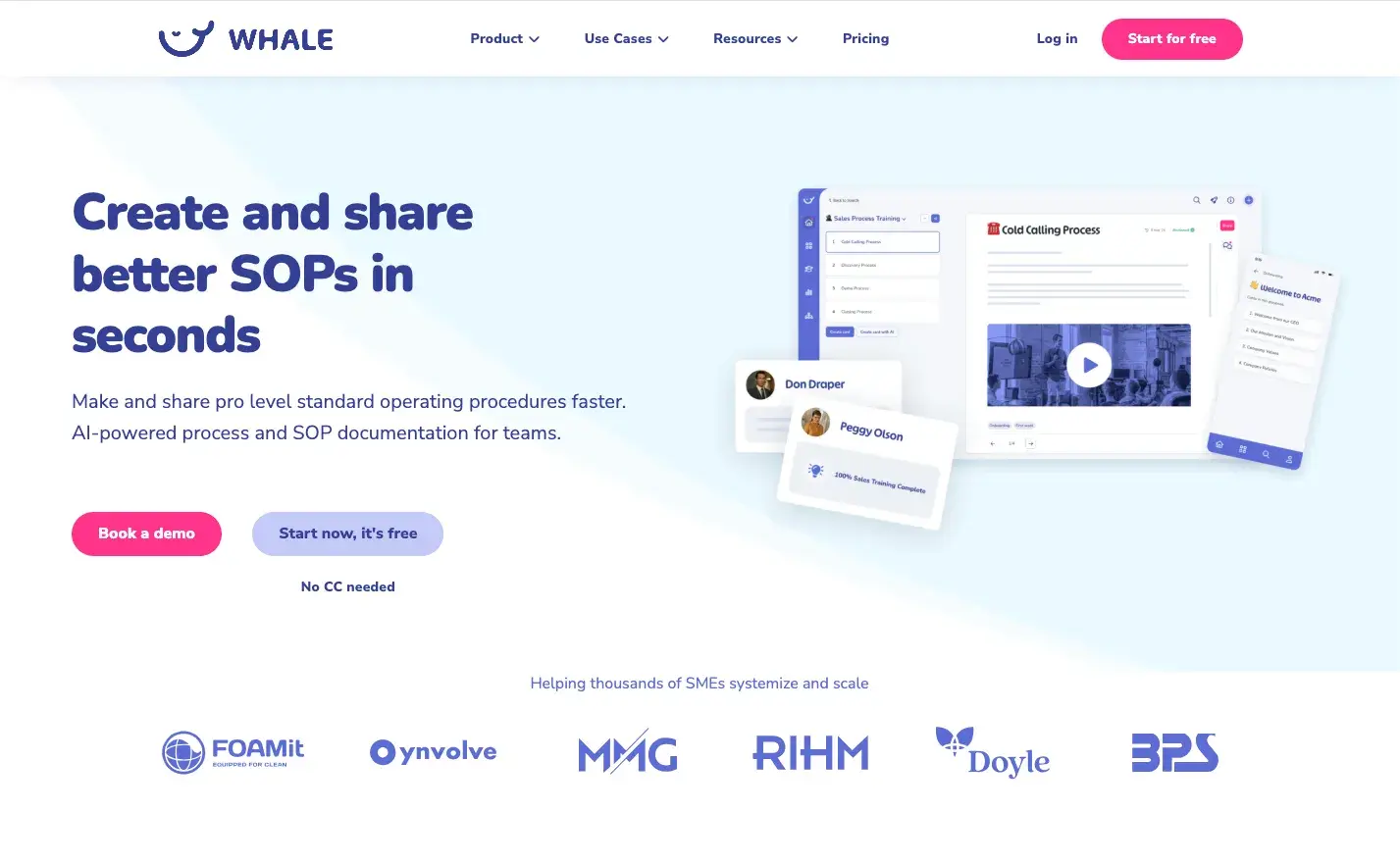
Beyond the intuitive and user-friendly web and mobile app, when you dive in, you’ll find the Whale Universe containing all the information you need to guide you through setting up your knowledge base. It has automated workflows so you can easily share information with colleagues.
I love their Chrome extension, which surfaces knowledge directly within the apps you are using, saving you valuable time.
What I like: Whale’s knowledge base is a stellar example of how seamless integration of AI can enhance information management. The ease of use is remarkable — you can get started in seconds. Additionally, Whale provides easy-to-use templates, comprehensive product guides and training, and engaging customer success stories to keep you informed and motivated.
7. Airbnb
Love it or hate it, Airbnb is a powerhouse in the travel industry, and its knowledge base reflects that dominance. Using Airbnb’s knowledge base, you can find answers to common questions for both guests and hosts.
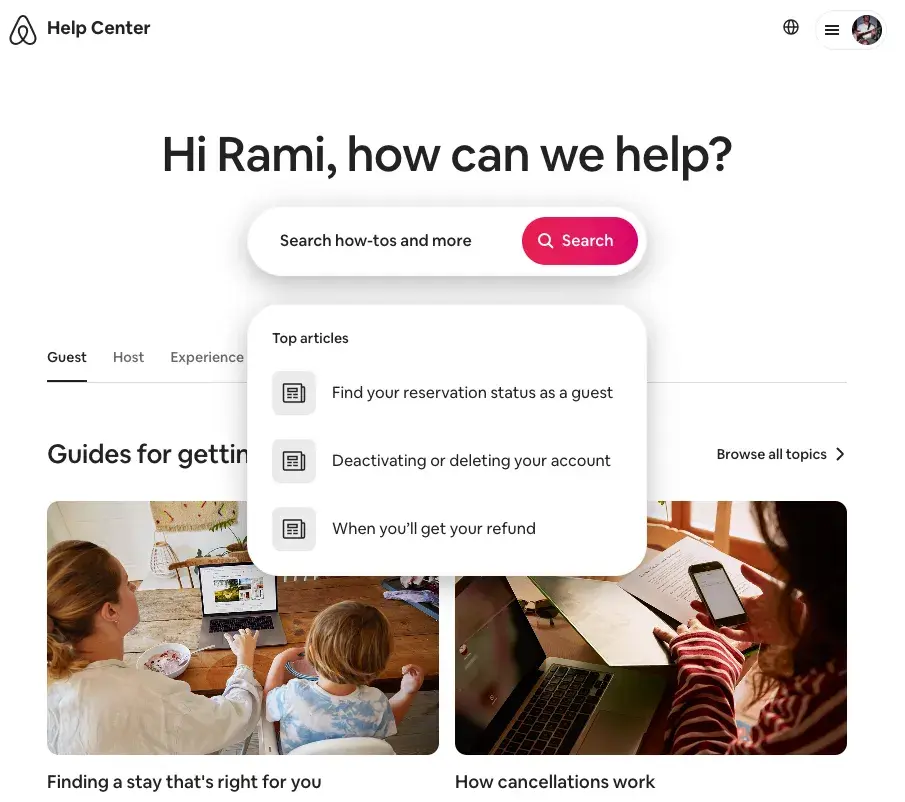
I played around with the knowledge base and was impressed with how personalized it is. When I clicked on the search bar, top articles appeared as suggestions, and the list changed depending on whether I was a guest or a host.
What I like: Airbnb prominently displays in-depth content related to anti-discrimination and accessibility policies, tips for avoiding scams, and advice on what to do in an emergency. I like Airbnb’s focus on safety and inclusion because it reflects the company’s core values while remaining a helpful support resource.
8. Slite
Slite is a documentation platform used by teams at BambooHR, AgoraPulse, and Logitech. Teams use Slite to document processes, capture meeting notes, and build their collective knowledge. If I ever need help with Slite, there's only one place I'm going: the Slite Help Center.
Slite's help center feels like a breath of fresh air - clean pages, thoughtful organization, and a clutter-free interface that lets you focus on finding answers. The moment you open it, you know exactly where to look, with clear categories in the sidebar and an intuitive search function.

What I like: The "Ask" feature is a game-changer. Instead of digging through documentation, I can simply type my question and get a well-cited answer.
9. 1Password
1Password is one of the industry’s most trusted password managers, with over 100,000 businesses and millions of customers relying on it to keep their data secure. If you’re just starting, you’ll find everything you need once you hit the “Start Here” button.
For more experienced users, the knowledge base offers valuable tips on getting the most from 1Password, like using apps, browser extensions, and vaults.
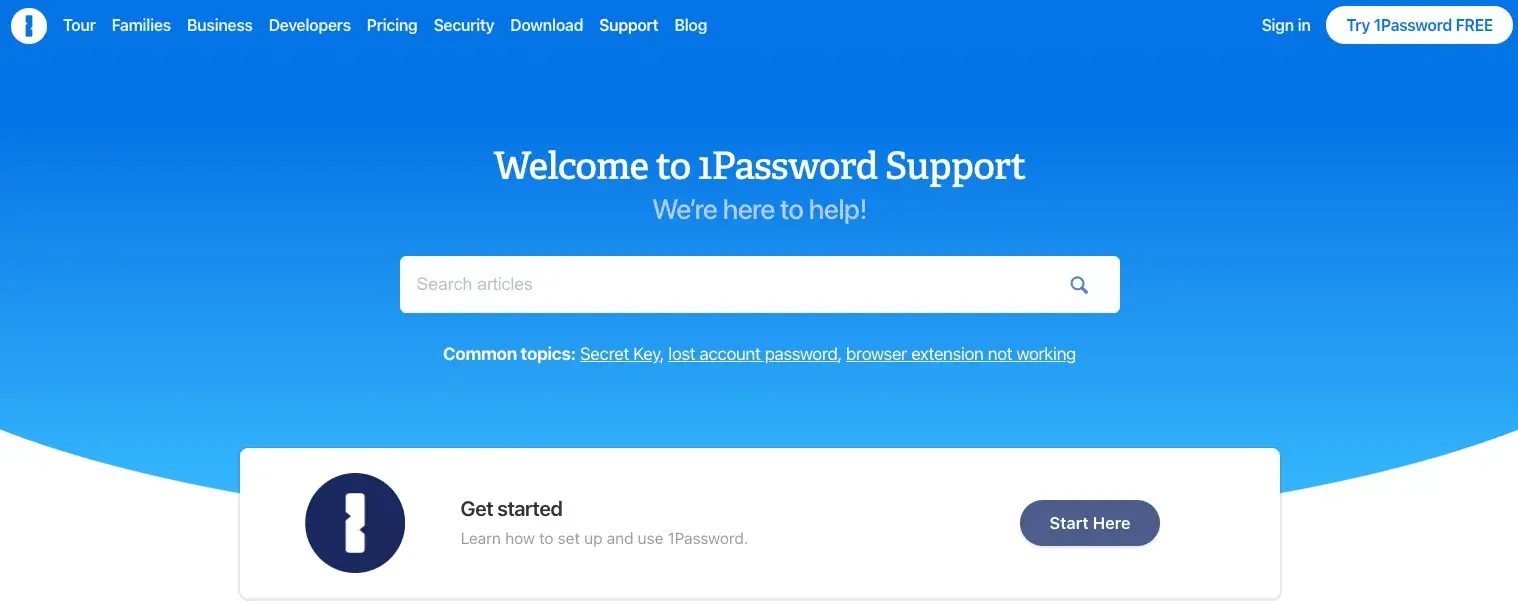
What I like: 1Password offers a variety of support tools. They have a comprehensive knowledge base, a friendly AI assistant, and a customer-driven, professionally moderated support community where users can connect and discuss support issues and best practices. They even give one another a heads-up about potential phishing scams.
10. Canva
With over 170 million active users, Canva is one of the most popular design platforms in the world, and its knowledge base supports that. With so many users, a comprehensive knowledge base and extensive documentation are necessary. Otherwise, their support team would be completely inundated.
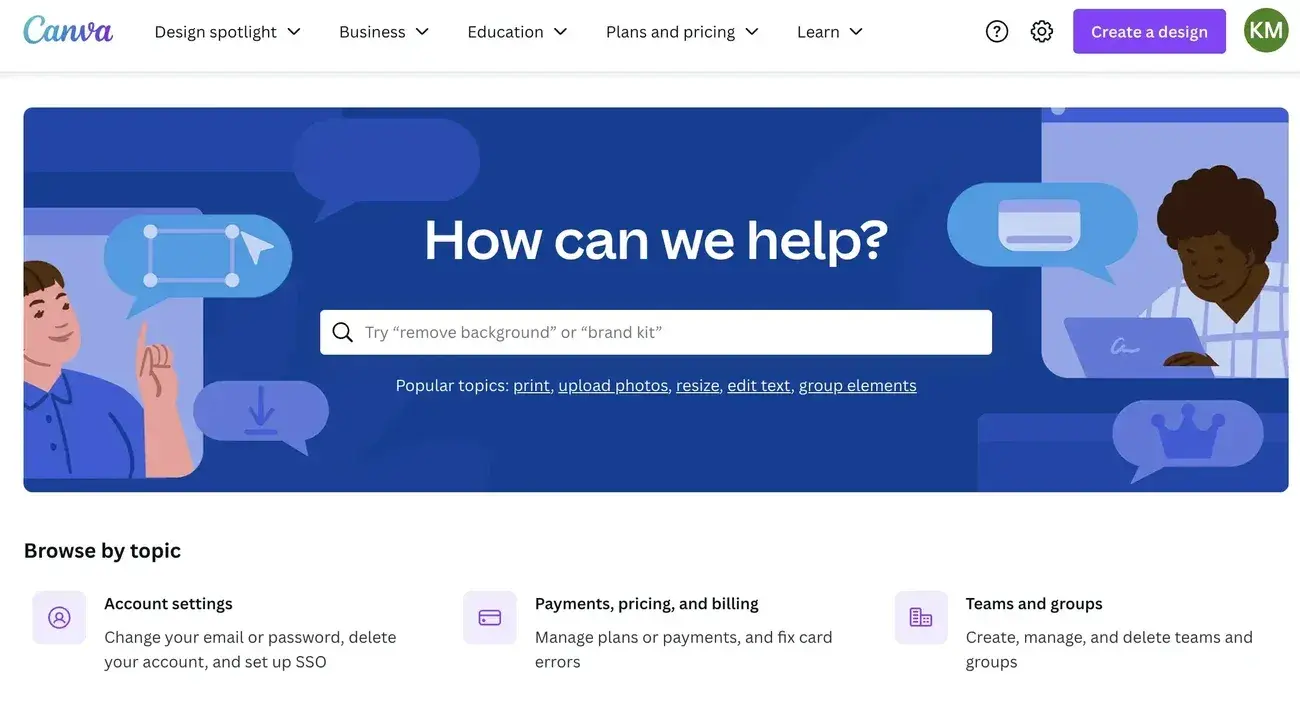
Using Canva’s knowledge base, I could quickly browse documentation by topic. Comprehensive, well-organized documentation supports everything from account settings to downloading and saving projects and using Canva’s editing and design tools.
While Canva’s product is simple to use, it’s actually quite complex regarding available features, so I was impressed by the thoroughness of its documentation.
What I like: Canva’s Design School provides thousands of tutorials to help customers learn design fundamentals, significantly enhancing customer success and making great design accessible to everyone.
11. Google
Google’s extensive knowledge base supports the company’s various products and services.

Instead of a table of contents, the knowledge base displays icons for each Google product and service (e.g., Chrome, Gmail, YouTube, etc). I poked around the knowledge base and found it intuitive. Clicking on an icon brings you to a list of the most popular articles, followed by more neatly organized help topics in drop-down lists.
As you’d expect from Google, all their help documentation is searchable via a high-powered search bar that immediately populates with relevant articles based on your search terms. If you can’t find what you’re looking for, Google also offers robust community support where users can ask questions directly and receive replies from Google team members and other customers.
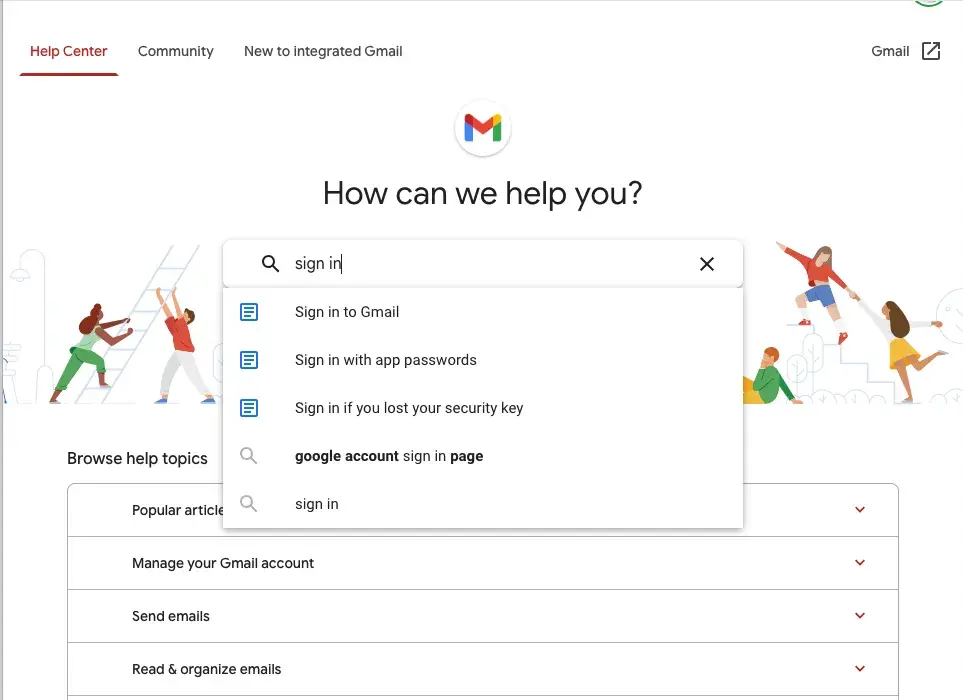
What I like: Google’s support homepage is on-brand with its minimal, uncluttered, yet whimsical design. Despite Google’s extensive number of products, I could hone in on whatever I was looking for in just a few clicks.
12. Netflix
I usually have no issues with Netflix, so I rarely need to check their knowledge base. If my TV binge session is interrupted by technical issues, I can typically fix it by refreshing my browser or turning my TV off and then on again.
When I do need to look up Netflix support, it’s usually because I suspect someone is sharing my password or using Netflix on too many devices (I’m innocent, Netflix!).

I noticed that the account and billing section is high on the knowledge base, which makes sense; it’s the only section I need to read. Once you click a section heading, you’ll find a drop-down list of helpful explainer articles.
Personally, I’d like to see snippets of these articles displayed here, but I don’t have any significant issues with the bare-bones layout. It makes sense, considering the straightforward nature of Netflix’s product.
What I like: I appreciate that a section of Netflix’s knowledge base lets me suggest TV shows or movies. It means I can hold out a tiny bit of hope that they’ll take my suggestions and add my favorite content to their library.
13. OpenAI
Open AI, the company behind ChatGPT, has a solid knowledge base primarily dedicated to account information and using ChatGPT effectively. As you might expect, OpenAI integrates an AI chatbot into its knowledge base to provide quick answers.
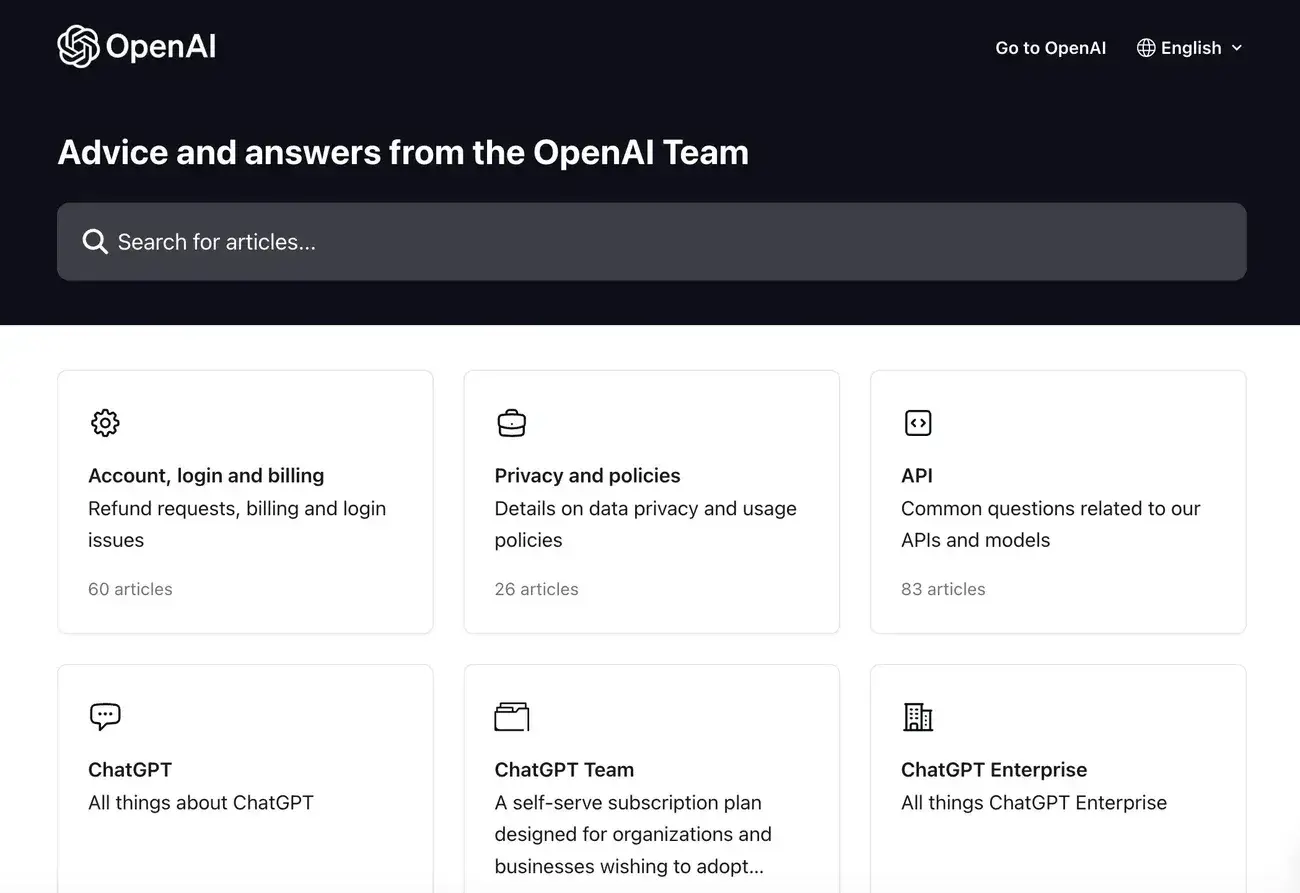
When I browsed some knowledge base articles, I was impressed to see that they had recently been updated. The knowledge base intelligently suggests related articles to the one being viewed, which is helpful in quickly browsing the documentation.
What I like: OpenAI’s knowledge base is transparent about ChatGPT’s limitations, including its Western bias and the fact that it can be very convincing while providing incorrect information. I think new users should study ChatGPT’s knowledge base to ensure they’re using the tool effectively.
14. Asana
Asana is a work management platform with workflow automation and project management features. Its knowledge base has a clean layout with lots of whitespace and offers extensive video tutorials to help you learn the basics of Asana in minutes.

Asana provides helpful use cases, screenshot-assisted help articles (I love these!), and even courses on the product, including self-paced, pre-recorded, and live training. Asana also features a helpful AI chatbot to assist in surfacing appropriate knowledge base articles. Unfortunately, it didn’t seem enthused that I was writing an article about it:
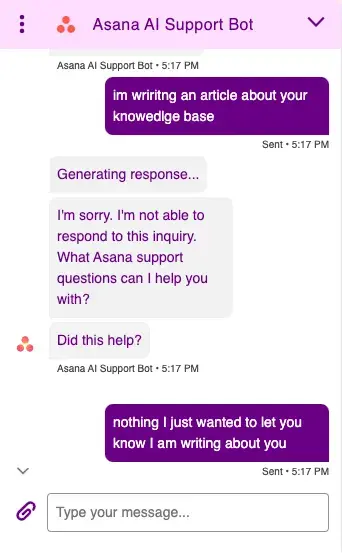
What I like: The explainer videos in Asana’s knowledge base balance a funny and informative tone. Even if you don’t plan on using Asana, check out these videos to see how knowledge bases can have real entertainment value.
15. Dropbox
If you’re among the 700+ million people who use Dropbox, you might have used its knowledge base to solve common issues like syncing, sharing, and organizing your files.

Like many of the best knowledge bases, Dropbox features a prominent search bar at the top of the page. When I clicked into the search bar, it popped up with what I can only assume are the most popular support inquiries.

What I like: This knowledge base prominently features the Dropbox Community Forum, which I’m a big fan of. It has specific groups for beginners, photographers, and musicians — shout out to Community Manager Graham for some great posts on music-related topics.
16. Notion
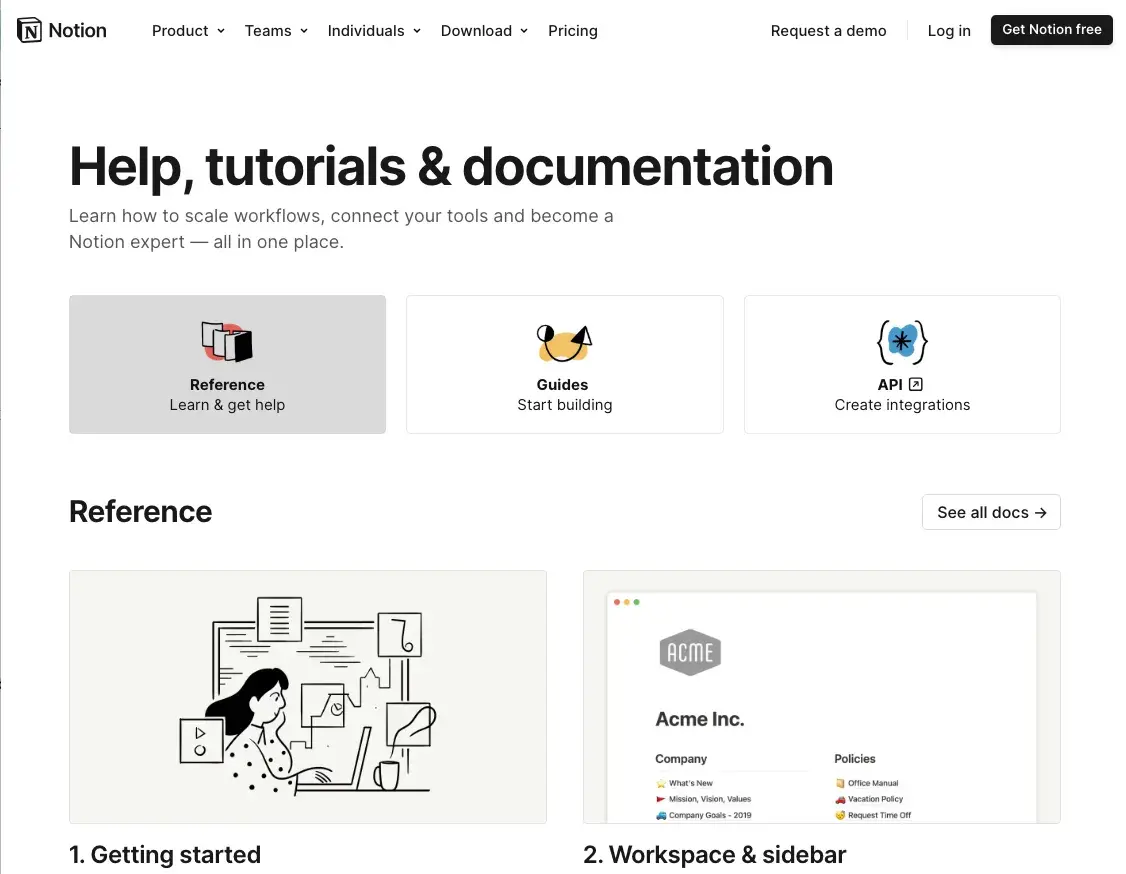
Notion’s knowledge base provides extensive resources for getting the most out of the platform’s features. I like their Guides section, which contains many helpful articles for learning new ways to use Notion, replete with detailed screenshots and GIFs that break down step-by-step guides into easily digestible snippets.
I found Notion’s help center well-organized, attractive, and intuitive. I like how the content is separated into three blocks at the top of the page for Reference, Guides, and API documentation, making it easy to dive right into whatever you need help with.
What I like: I like the Notion Academy, which offers curated learning pathways for getting started with Notion and taking advantage of custom solutions for everyday use cases. If I used Notion for my business, I would first devour all the content in the Notion Academy to ensure I was familiar with the product and its various capabilities.
17. Nuclino

Nuclino is a collaborative knowledge management platform that helps teams manage and organize information in real time. Their knowledge base reflects the product’s ethos by providing clear, well-organized guides in a modern, minimalist interface.
I like how each product category is represented by a card on the home page of the Nuclino knowledge base. I also tested out the search bar and found it to be quick and powerful:

I like how articles related to your search term immediately pop up when you start typing. You can even scroll down to reveal the complete list of help documentation containing your search terms without leaving the page you’re on.
What I like: Nuclino’s knowledge base is clean and easy to navigate. I love the “Get Started” card on the homepage, which brings you to a comprehensive document with video tutorials, screenshots, and templates so you can hit the ground running with their product.
18. Shopify
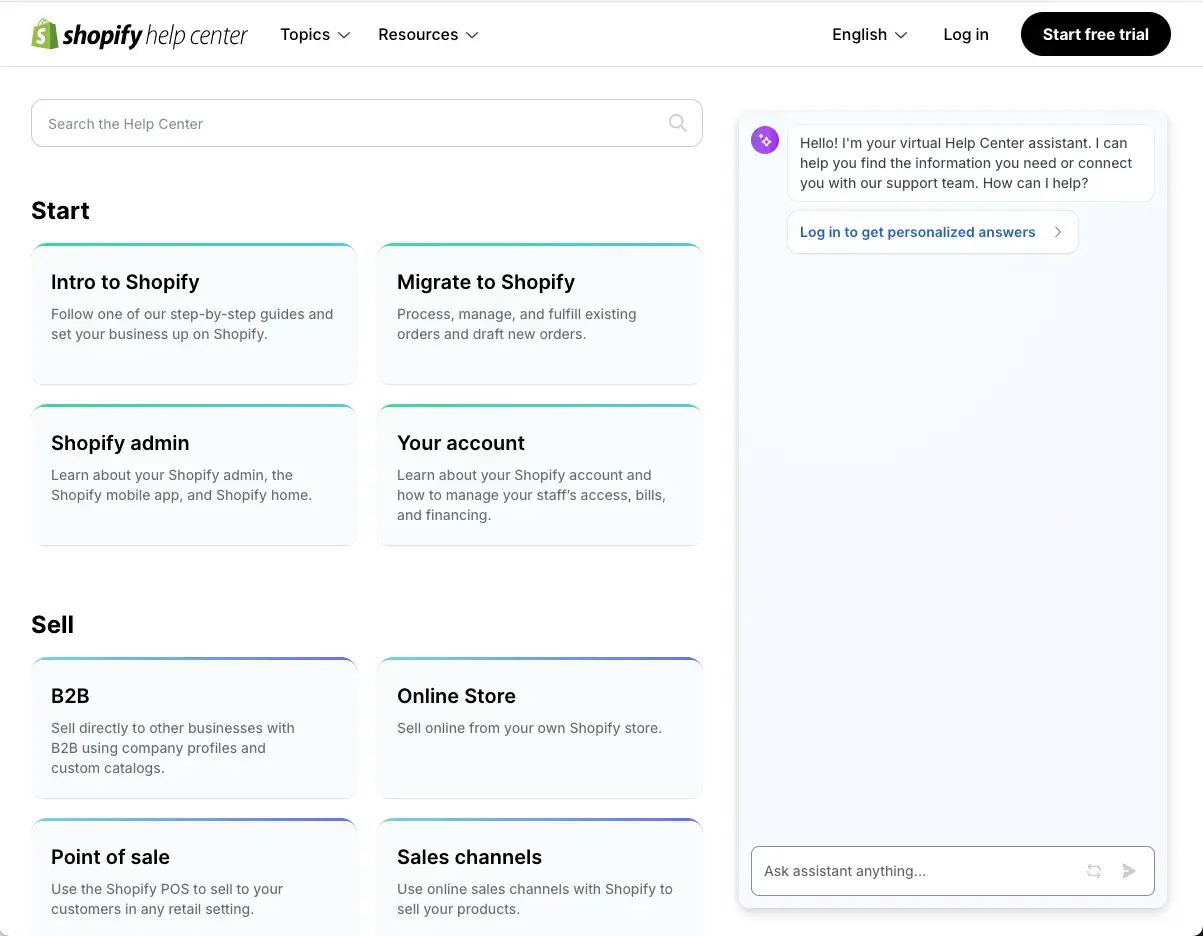
Shopify is a dominant ecommerce platform with a knowledge base to back it up. Shopify’s help center prominently features an AI-powered assistant that excels at processing natural language inquiries and providing appropriate help articles in response.
It also features a search function, but unfortunately, it doesn’t automatically populate with articles related to your search term. You’ll need to type in your search term and press “Enter” to view your search results. Crazy, I know.
What I like: The resources tab at the top of the knowledge base lets users browse by the type of support content they’d like to view. Shopify offers webinars, business courses, a community forum, and even a Shopify Academy YouTube channel with extensive video tutorials and how-to guides.
19. Intercom
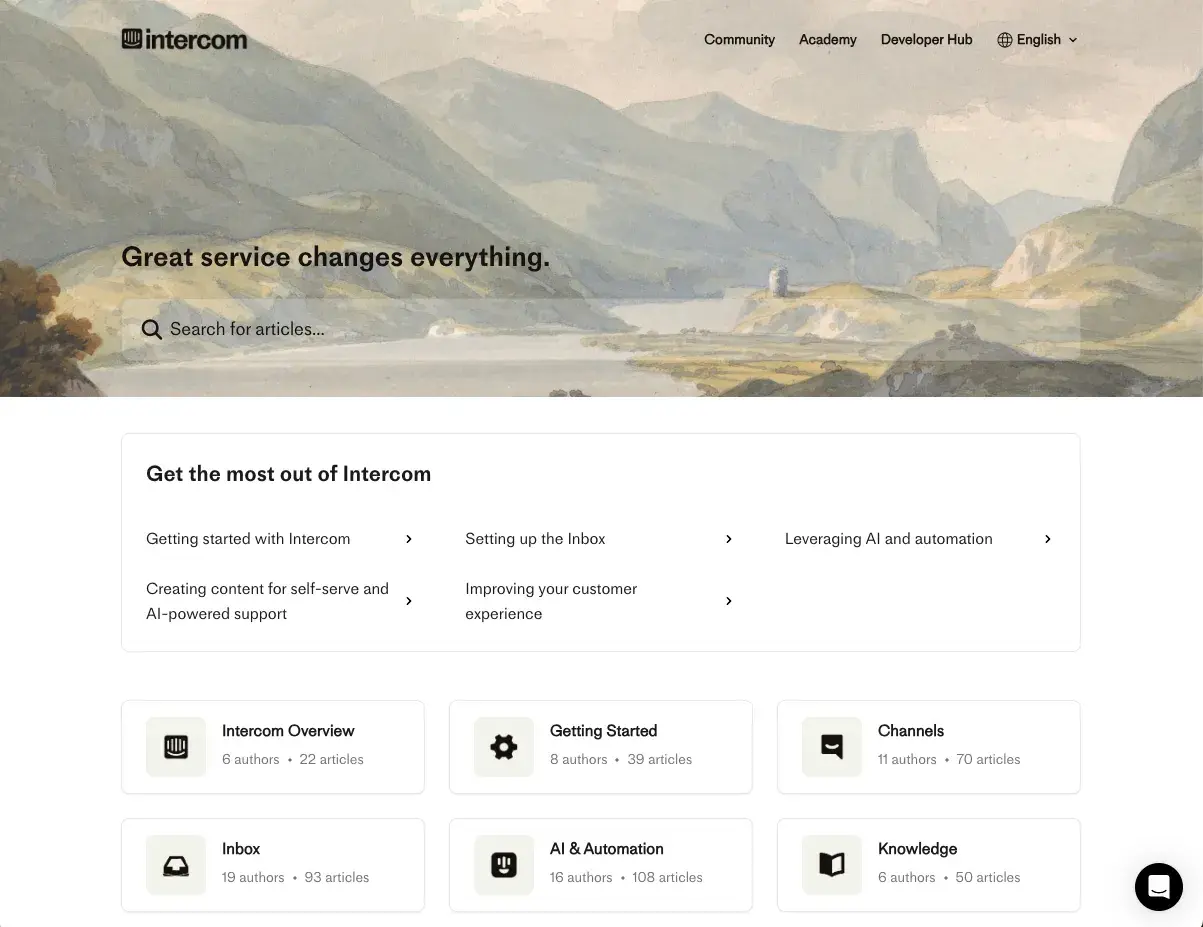
Intercom is a customer communication platform that offers extensive live chat and AI bot functionalities. Intercom’s knowledge base is pleasing to look at and features a prominent search bar at the top of the page.
When I started typing in the search bar, related articles immediately popped up, which I liked. I also liked that the search bar prompted me to ask Fin, their AI agent, the question I was typing up:
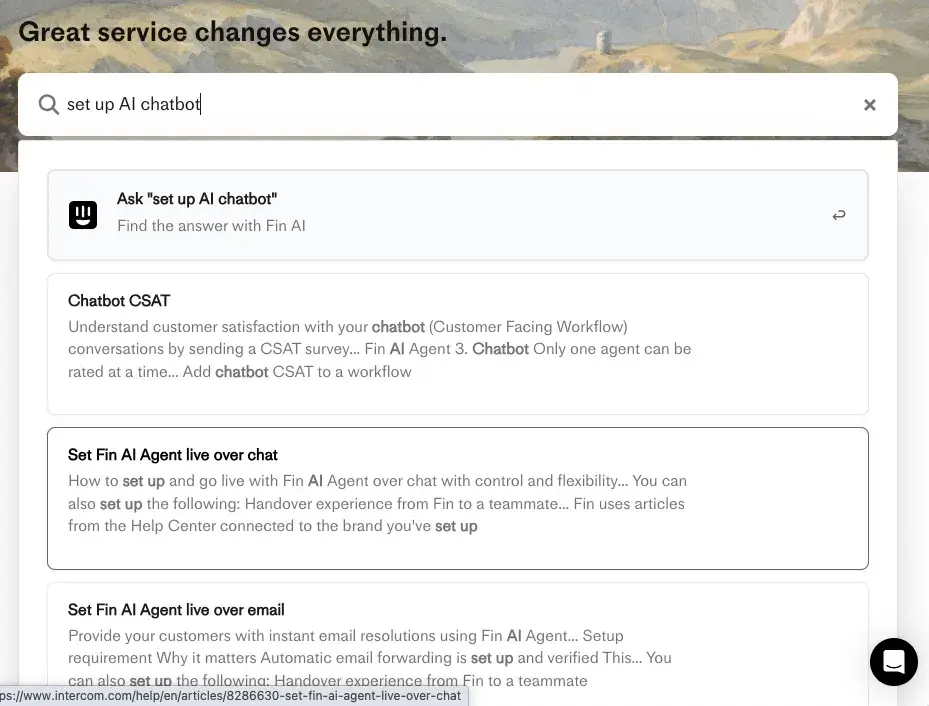
I think that is a helpful feature of the knowledge base that could encourage AI adoption amongst users who aren’t as inclined to click on the little message bubble in the bottom right corner of the screen.
What I like: Intercom’s knowledge base is well-organized and comprehensive. I like that it features a “Get the most out of Intercom” section at the top with links to popular help articles, and I’m always a fan of breaking down help topics into enticingly clickable cards.
20. Squarespace
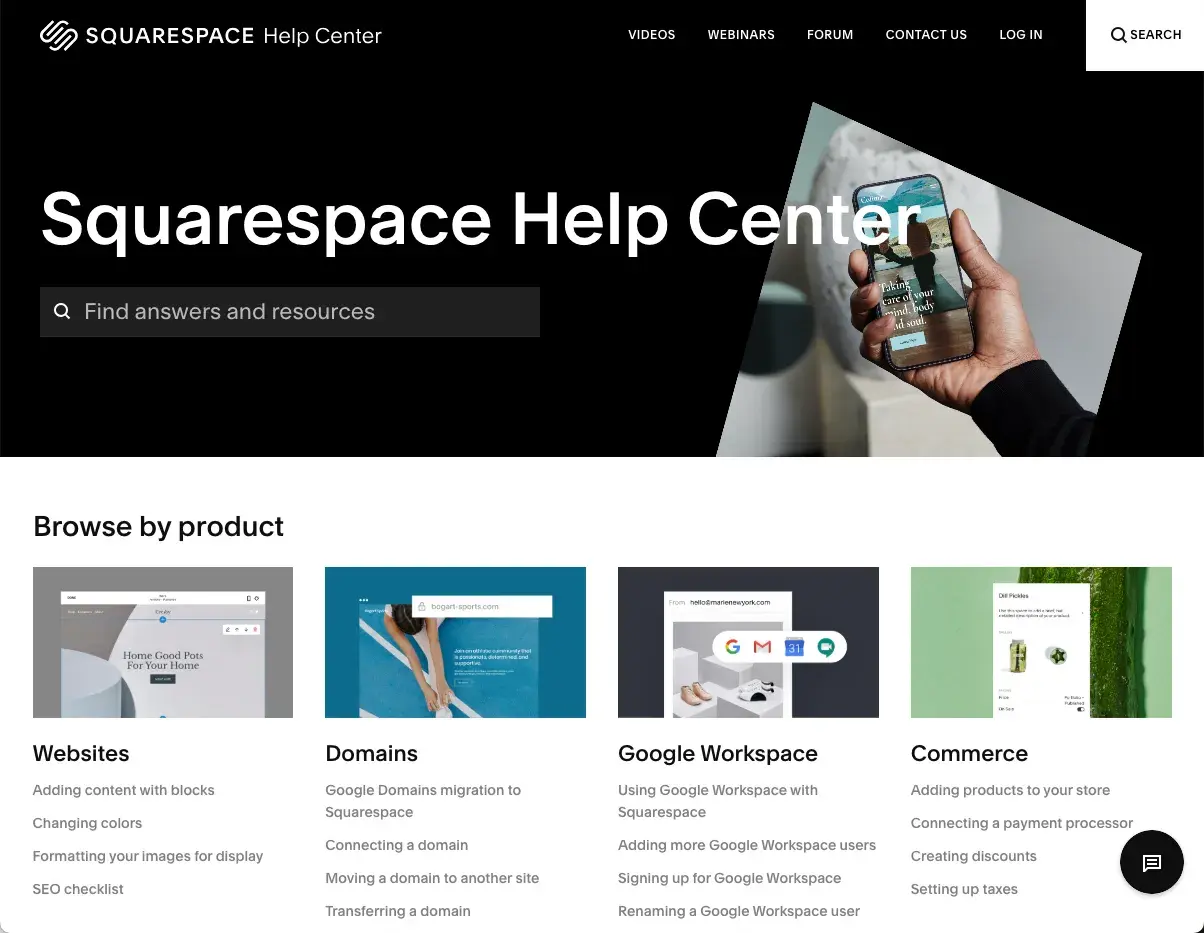
Squarespace Help Center is a top-notch knowledge base with detailed guides, videos, and documentation for all of Squarespace’s features and products. I like the highly functional search bar at the top of the page and the cards below that break down popular articles by product.
I use Squarespace for multiple websites and am familiar with their support resources. Specifically, I’ve found the Squarespace community forum to be an invaluable resource.
I remember when I was setting up my personal website, I had some kind of issue with my SSL certificates not being available. I honestly don’t remember the problem, but I solved it by referencing a community forum post where someone else overcame the same issue.
What I like: Squarespace’s community forum is highly active. Its dedicated base of super users constantly posts and helps one another out. That’s especially true for the “Customize with code” section of the forum, where users can discuss advanced editing with HTML, CSS, and JavaScript. It’s teeming with helpful troubleshooting threads and code examples. I also love its leaderboard of top forum contributors (shout out, paul2009).
21. Spotify

As a musician, Spotify is close to home for me. My band’s music is on there, and it always trips me out to know people are streaming our stuff as I write this. But I digress. If you ever have an issue with the platform, Spotify’s knowledge base is the place to go.
Spotify’s product is more straightforward than the business apps and platforms discussed above. Most of the time, when I have a problem with streaming on Spotify, I just need to reset my router.
Still, Spotify’s knowledge base is an excellent example of a consumer-focused help center that gives you everything you need to know about the platform in an easily digestible format.
It’s a simple page design with a search bar and six dropdown menus for each category of support-related questions you might encounter. If you can’t find what you’re looking for there, there’s also a “Quick help” section with popular articles and a community forum where Spotify users around the globe can pitch in to help each other out.
What I like: Spotify’s community forum has an Ideas page where users can suggest new products and features directly to the Spotify team. I love that you can browse popular and trending idea suggestions and see which ones develop into real app features.
Stay Relevant With Tech Trends
In my help desk knowledge base examples, you might have noticed that many companies use AI chatbots to share knowledge — this is no coincidence. Businesses are reworking their knowledge bases in response to technological advancements, making them much easier to manage and navigate.
While I think AI is an excellent addition to knowledge bases, it’s no substitute for expert-backed content. Ideally, AI should complement rather than replace your support team. It’s super helpful in surfacing articles in your documentation, but it doesn’t replace an actual human support rep who can provide answers and empathy when customers need it most.
When creating a knowledge base of your own, consider adding these key elements that I’ve noticed amongst all my help desk knowledge base examples:
- Intuitive search functionality. Your search bar should be prominently featured on your homepage, and it should surface relevant content quickly. Consider using AI-powered search so customers can ask questions using natural language.
- Multiple content types. Your self-help content should include text guides, videos, screenshots, and GIFs wherever relevant.
- Community support. Community forums empower users to help one another and foster a sense of community and goodwill around your brand.
- Clear organization. All of the best knowledge base examples feature logically organized categories so customers know where to click depending on the type of question they have. My favorite examples use attractive card-style layouts to organize content types.
- Personalization features. Different types of customers need different types of support content. Your knowledge base should adjust content delivery based on user type and history.
Your knowledge base should reflect your company’s values while addressing your customers’ concerns. I recommend regularly analyzing your most popular articles, updating your content regularly, and implementing feedback mechanisms to ensure you are always providing customers with the information they require for success.
By learning from industry leading knowledge base examples above, you too can create self-help resources that empower your customers, increase satisfaction, and reduce support costs.
Upon checking online, I found that other websites have reviewed similar platforms and voted them as the top knowledge base tools to use. If you want to gain more information about the tools that I’ve covered, along with some helpful peripheral points regarding their types, ideal features, etc., you can check out this knowledge base software guide by Helpjuice.
Editor's note: This post was originally published in August 2022 and has been updated for comprehensiveness.
Knowledge Base


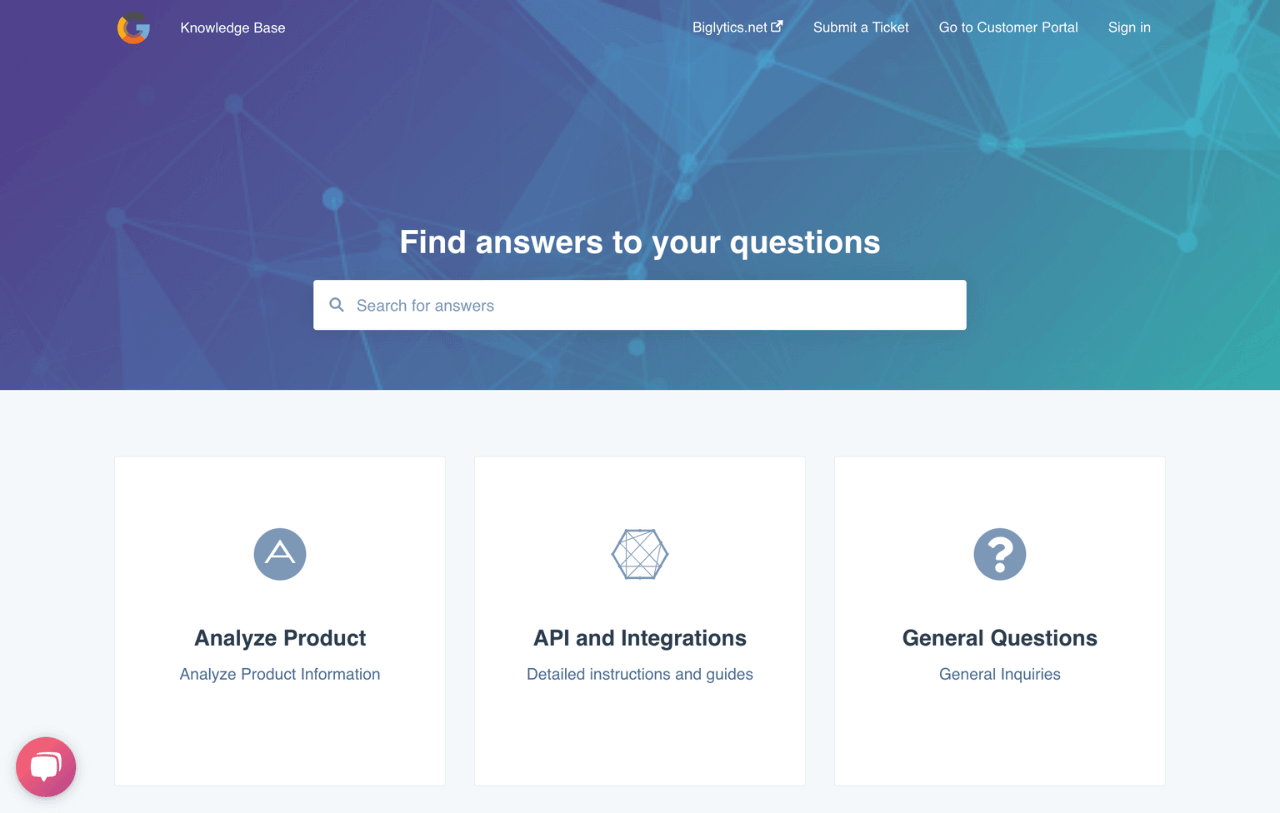
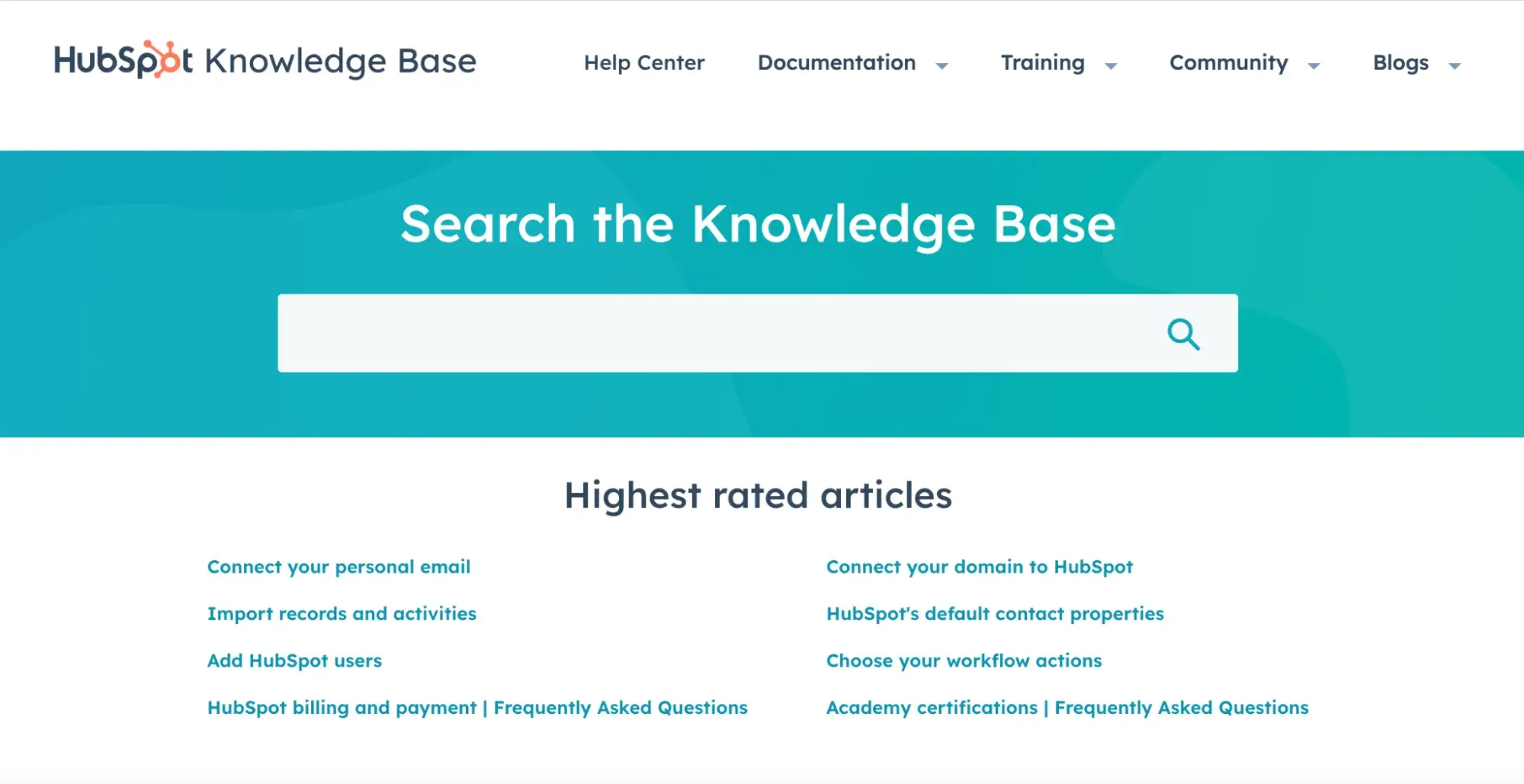









![How I Write Effective Knowledge Base Articles [+Templates]](https://53.fs1.hubspotusercontent-na1.net/hubfs/53/knowledge-base-articles-1-20250408-7398950.webp)